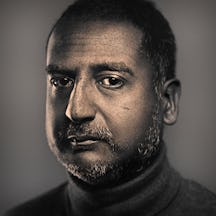David Jesudason explores how beards and moustaches can shape our personalities – and how we shape them to better suit us and society. He reflects on his own beard and talks to four other men about their facial hair, asking them to find a hirsute picture in Wellcome Collection’s archive that they can relate to.
What our facial hair says about us
Words by David Jesudasonphotography by Steven Pocockaverage reading time 6 minutes
- Article

David Jesudason, journalist
In the last decade of my father’s life I had no contact with him, as our few meetings had become too one-sided and traumatic. He repeatedly stood me up, and his lies became unbearable.
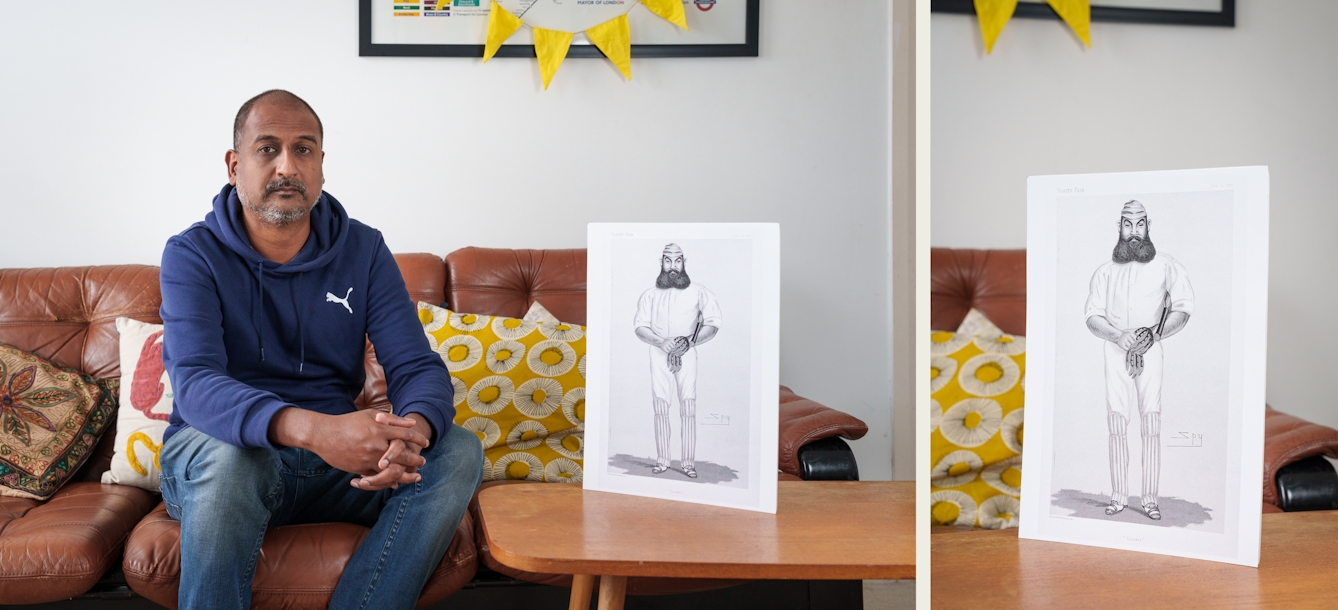
David Jesudason, journalist.
Leaving the relationship was liberating but left me with a lot of pain, especially when I looked in the mirror, because we shared so many facial similarities.
Our facial hair grew in the same way, but my dad would shave every day, leaving an intact moustache – which he would dye black to cover up the grey hair. I do the opposite and keep a salt-and-pepper beard and moustache.
I can’t remember the last time I had a wet shave. This pleases my partner, Clare, who protests whenever I consider seeing what I would look like cleanly shaven. Basically, the person who loves me most doesn’t like my face!
I used to watch cricket with my dad when I was growing up and it’s led me to associate facial hair with sporting prowess.
The legendary cricketer W G Grace (pictured) had a magnificent beard and moustache but, growing up, my hero was England and Essex batter Graham Gooch. His heroically high backlift of the bat and supreme fitness (he once batted for 628 minutes at Lord’s) elevated the tache – in my mind – to god-like levels.
Gavin Hegarty, architect
I empathised with this drawing, as I have a habit of not prioritising haircuts and beard-trimmings. I end up going to the barber’s feeling like I’m taking the piss.
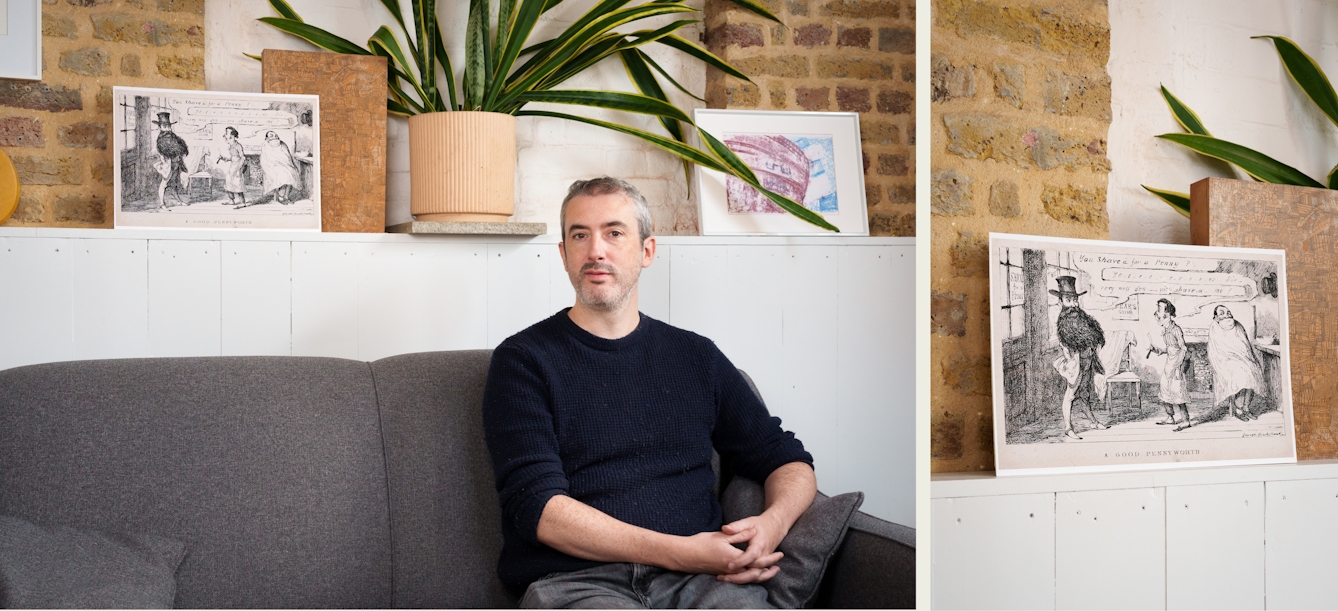
Gavin Hegarty, architect.
There have been phases of facial hair in my life, but I think of my natural face as having hair on it.
When I was a teenager, and first developing a beard, it became a thing between my mates to see who could grow the most facial hair. I remember seeing Sigur Rós when I was in my 20s and ‘profoundly’ realising that all the people I liked and respected in the world had beards.
I thought about my dad and other family members, and it was at a time before beards had become painfully ‘hipster’. Dad has always had a beard, except once when we went on holiday to Greece. My sister, who was aged five or six, cried the whole time.
Back then I didn’t have to shave once a week, and I only would trim my beard if I was on a building site, otherwise people would think I was a builder. It’s not Irishness, specifically, but navvy-ness, and they said I looked like Captain Haddock.
The last time I had a wet shave was for my sister’s wedding in 2013. There’s an Irish perspective that you smarten up [by shaving] and I think Irish parents can be a bit judgemental at times. So I did it for my mum: she never liked my dad’s beard, was always disappointed that I grew a beard, and even asked me to shave it off. It looked stupid, though. Even when I look at the wedding photos now, I regret it.
Steve Sailopal, alcohol-free brewer
It’s only in the last ten years, when I was about 38, that I started to grow the tache. It might be because I’m in the brewing industry and all the brewers have long beards. But it’s really because I started to read a lot of books on Rajasthan and the Rajputs of Indian culture.
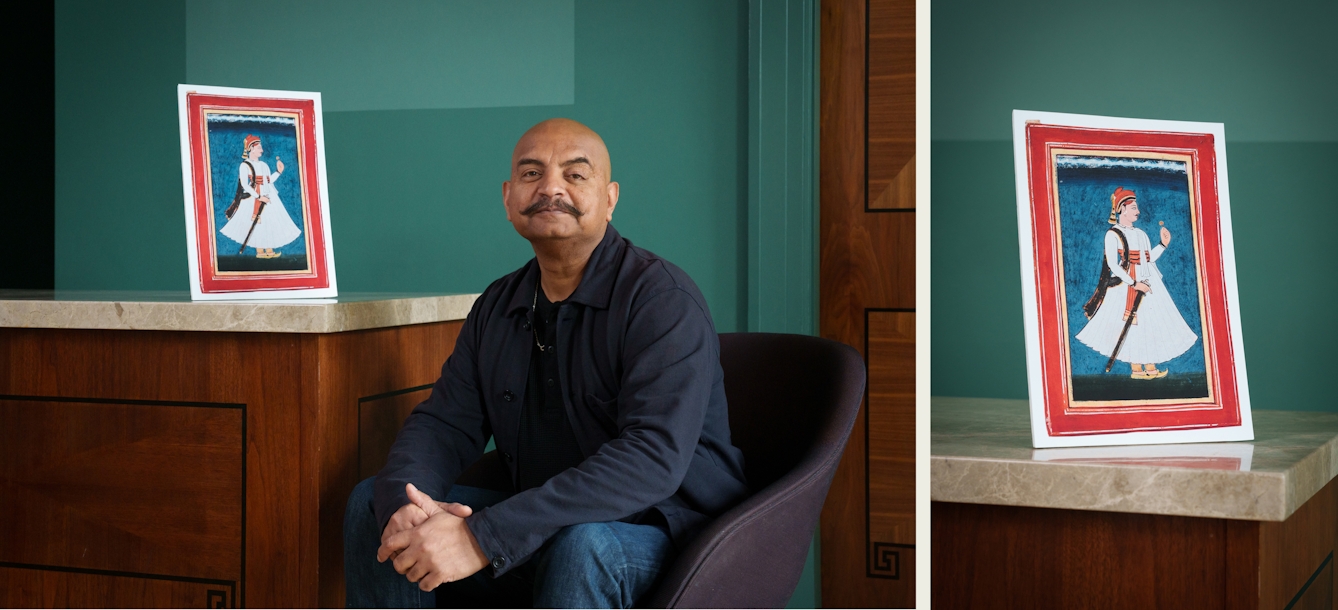
Steve Sailopal, alcohol-free brewer.
I’m Punjabi. You go there and everyone has turbans and big beards, but it was when I stayed in Jaipur and Udaipur with my dad that I became a young kid again. It was like the doors were opened.
My father was the only one in the family who had a tache, which I admired. We used to watch old Indian movies together when I was about eight years old, like ‘Mughal-e-Azam’. This was a very flamboyant film made in Rajasthan, with Raj Kapoor’s father [Prithviraj] in it. The sets had all the intricate walls and mirrors of Jaipur, and the actors all had Rajasthan taches.
I hated shaving, always had stubble and loved the rough look. But I grew the tache after more frequent visits to India. And people said, “It looks great!” so I thought I’d keep it – my dad would’ve been proud of it.
Danny Birchall, digital manager
I first grew a beard in the 1990s because goatees were in and I’ve got a shit chin. There was a limit to how it would grow. If I could’ve grown it stupidly long, I would have, but it just didn’t look good after about an inch and a half.

Danny Birchall, digital manager.
At times I had quite a pointy goatee and then, when I was in my mid-30s, I shaved it off and had a pudding face for a while. I keep it shorter as it’s greyer now.
If you search for ‘beards’ in the collection, you’ll find pictures of poor people, distressed people or mentally ill people who have beards. If you search for a great physician, like Sigmund Freud, you’ll also find plenty of pictures of men with beards – only it’s not remarkable that they’ve got beards because it’s not the subject.
A beard was a mark of intellectual distinction and of great science at the turn of the century. Beards were synonymous with men of thinking: a big head with world-changing thoughts. The beard was the anchor of intellectualism, but it’s also intertwined with empire.
Amir Dehghan, political artist
I was born in Shiraz. When I was two years old, my family fled Iran. My dad was a political prisoner who was arrested because he created an anti-regime social group at the petroleum company that he’d worked for since the Iran-Iraq war. He was in prison for four months and bribed his way out – it’s why I’m a political artist, I’m claiming the heritage.
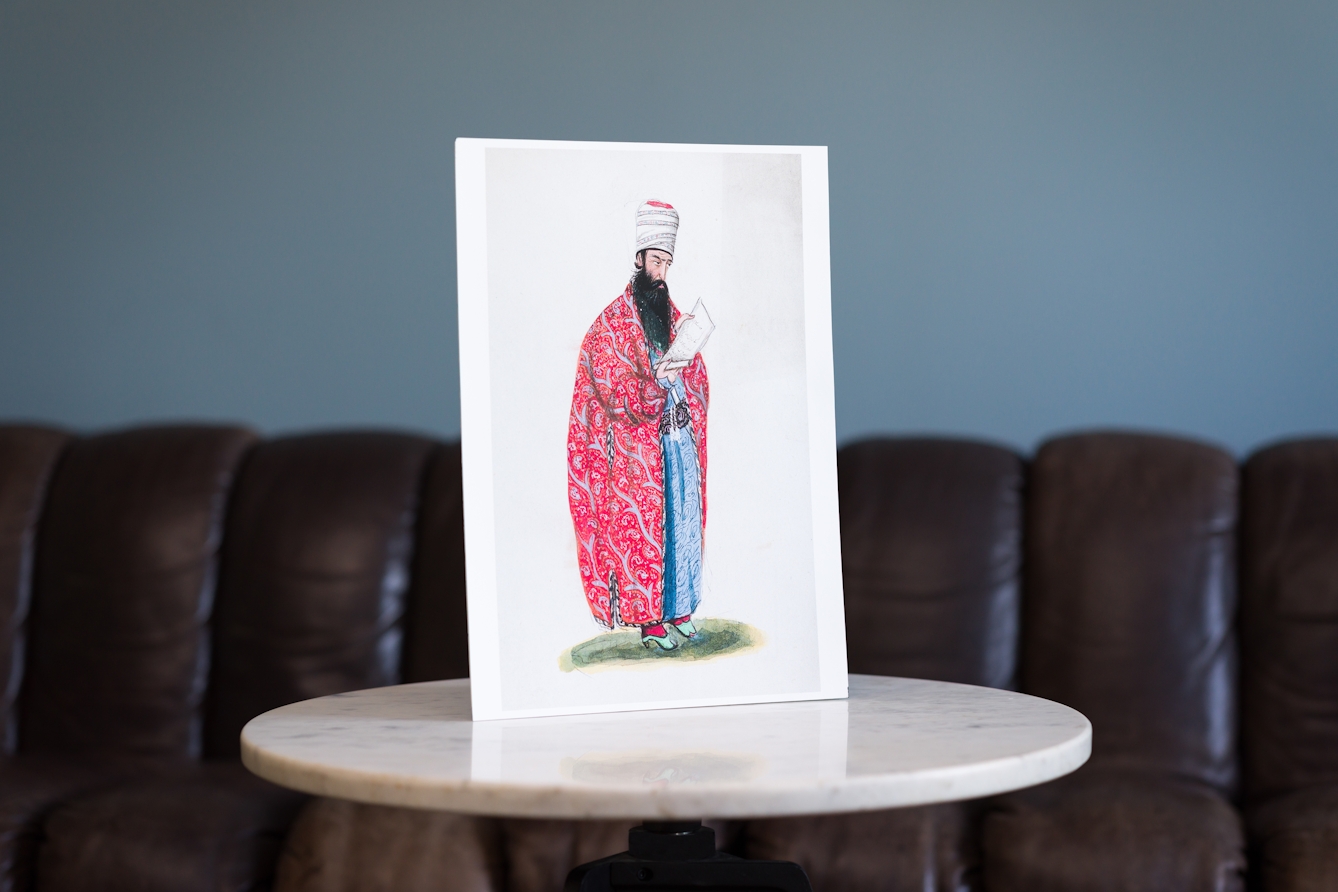
An unidentified Persian astrologer or mathematician. Gouache painting by a Persian artist, Qajar period.
My dad’s family came from an Iranian gypsy village outside Shiraz where, if you have a strong moustache, it means you’ve come of age and can have complete agency over your life. You can marry, leave home, and become an individual outside the family.
I’ve kept that traditional Iranian gypsy look with a strong moustache since I was 17. There are negatives: I can’t have milk before I go to bed because I’ll wake up with a crusty tache.
I’m drawn to astrology and the science behind it, but the patterns on his coat [in the picture] stood out because recently I’ve been studying how to make block-printed traditional fabric. I’ve never seen anything like his headdress before, but his beard is reminiscent of some of my family – they have his look: curious of nothing, but nosey of everything. They have their noses – and beards – in other people’s issues.
About the contributors
David Jesudason
David Jesudason is a freelance journalist who covers race issues for BBC Culture, Pellicle and Vittles. He was named Beer Writer of the Year in 2023, after his first book ‘Desi Pubs, A Guide to British-Indian Pubs, Food and Culture’ was hailed as “the most important volume on pubs in 50 years”. David also writes ‘Pub Episodes of My Life’, a weekly newsletter about the drinking establishments that serve marginalised people.
Steven Pocock
Steven is a photographer at Wellcome. His photography takes inspiration from the museum’s rich and varied collections. He enjoys collaborating on creative projects and taking them to imaginative places.
